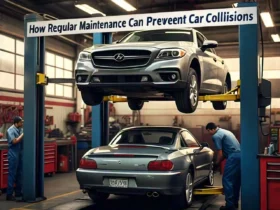It starts with good intentions—firewalls, antivirus, a few strong passwords—but keeping federal contracts means stepping far beyond those basics. Companies tied to the defense industrial base are now realizing that minimum security won’t cut it. CMMC requirements aren’t just checkboxes; they represent a shift in how security needs to work every day, at every level.
Evolving Cyber Posture Beyond Perimeter-Level Safeguards
Traditional IT security focused on guarding the edges—keeping the bad guys out with hardened perimeters and layered barriers. But today’s threats aren’t waiting at the front door. They’re slipping through email attachments, remote connections, and insider access. Meeting CMMC requirements means broadening that perspective to monitor what happens inside the network, not just around it.
For organizations working toward CMMC Level 1 or Level 2 requirements, the internal posture must shift from passive protection to continuous verification. Identity, device access, and data movement are all under scrutiny. That’s where Zero Trust principles come into play—verifying every access point, segmenting internal networks, and watching for unusual activity. It’s a mindset change that builds resilience far beyond legacy perimeter defense models.
Aligning Cyber Hygiene Practices with CMMC Mandates
Cyber hygiene sounds simple—patch systems, rotate passwords, back up files—but under CMMC compliance requirements, it takes on a whole new meaning. Regular tasks now require structured procedures, documentation, and evidence of execution. A missed update or weak password policy can become a serious compliance gap during a CMMC assessment.
The difference lies in consistency and traceability. What used to be “we usually do that” must become “here’s the proof we did it.” CMMC Level 2 requirements expect practices to be not only established but managed with formal oversight. That means version-controlled policies, scheduled vulnerability scans, and records that prove training and incident response drills have taken place. Aligning hygiene with CMMC isn’t about doing new things—it’s about doing old things better and proving it every step of the way.
Operationalizing Security Controls to Exceed Basic Thresholds
The real challenge isn’t installing new tools—it’s putting them to work with discipline. Many organizations already have firewalls, antivirus software, or log management tools, but using them in a way that satisfies CMMC compliance requirements demands more than set-and-forget configurations. It’s about operationalizing these controls so they actively support risk management and meet required practices.
For example, logging isn’t just about collecting data—it’s about analyzing it. Alerts need to be triaged, incident response plans must be tested, and roles clearly defined. Under CMMC Level 2 requirements, organizations must show maturity in how they operate security controls, not just that the tools exist. The bar rises from having security solutions to using them to shape behavior, limit access, and react quickly to potential incidents.
Calibrating Network Defenses for Advanced Compliance Standards
As companies scale up for CMMC Level 2 and beyond, they face the challenge of calibrating existing defenses to meet more rigorous standards. Firewall rules need refining, remote access protocols must tighten, and segmentation becomes essential—not optional. Many legacy networks weren’t designed with CMMC compliance in mind, so retrofitting those environments takes a strategic overhaul.
This includes evaluating how traffic flows through the network, where sensitive data lives, and how access is controlled. Multi-factor authentication isn’t just for remote logins anymore—it becomes mandatory for administrative access across the board. Meeting these higher standards requires collaboration between IT, compliance, and leadership to ensure every layer—from network architecture to daily operations—is aligned with the control objectives of the CMMC assessment.
Implementing Defense-In-Depth to Achieve CMMC Benchmarks
Defense-in-depth isn’t just a buzzword—it’s the backbone of CMMC compliance. It’s the concept of layering security controls so if one fails, others catch the breach. For contractors dealing with Controlled Unclassified Information (CUI), relying on a single point of defense is a gamble no longer acceptable under CMMC Level 2 requirements.
This approach spreads protection across users, systems, applications, and infrastructure. Endpoint detection, network monitoring, strict user permissions, and data encryption work together to form a unified strategy. The result? Threats have a harder time getting in—and if they do, a well-built defense-in-depth model contains and neutralizes the damage before it spreads. It’s a proactive build, requiring planning and investment, but one that strengthens compliance readiness at every level.
Leveraging Proactive Threat Mitigation for Compliance Success
Waiting to respond after a threat has already hit the system is no longer a sustainable model. CMMC requirements call for organizations to get ahead of risks before they become incidents. This means building proactive threat mitigation strategies that anticipate and reduce exposure—threat hunting, regular red team exercises, and continuous monitoring all play a part.
Organizations working toward CMMC Level 2 compliance should treat threat mitigation as an ongoing cycle, not a one-time event. Real-time alerts, behavioral analytics, and user awareness training are critical in detecting and preventing attacks early. A mature security program isn’t just reactive—it’s predictive. That mindset, when woven into daily operations, not only checks the boxes for CMMC assessment but strengthens the entire business against the evolving threat landscape.







